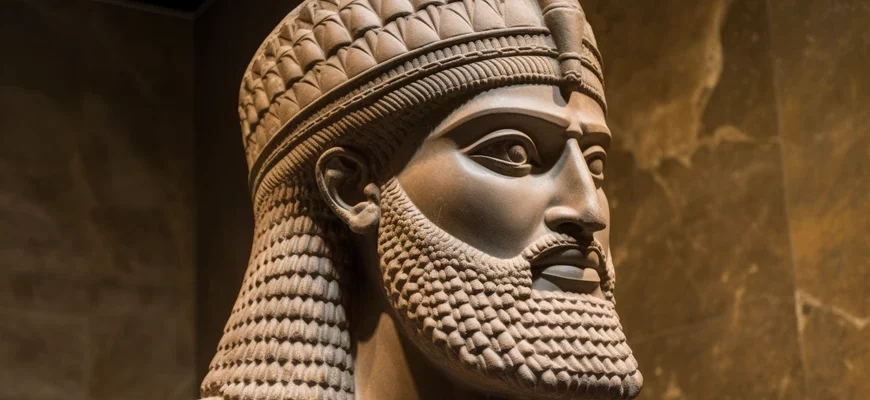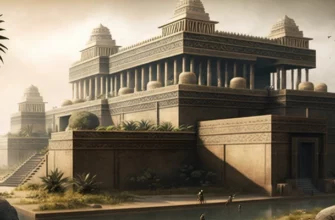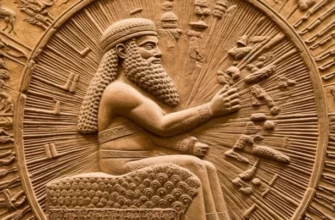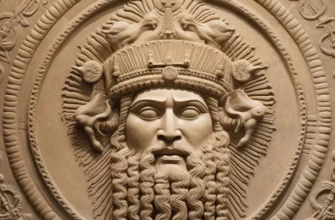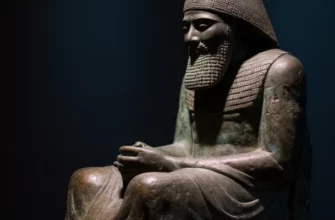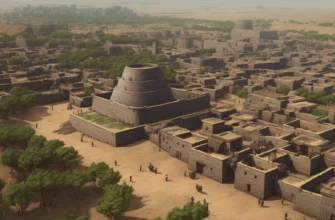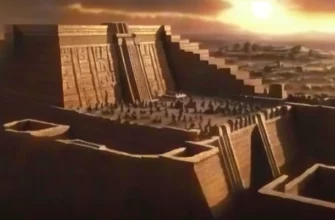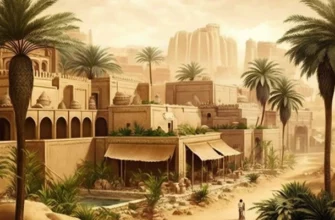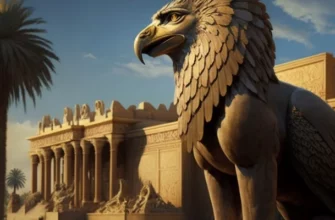Assyria was an ancient state that existed in the Mesopotamia region in the 3rd and 2nd millennia BC. During this period, Assyria experienced economic and political development, expanding its territory and conquering neighboring peoples. Its military power was formidable, allowing Assyria to dominate the Mesopotamian region. Religion and culture were also important aspects of Assyrian life. In the 2nd millennium BC, Assyria expanded its territory and developed cities and infrastructure. Interaction with other civilizations was important, including trade, diplomacy, and military conflicts. Assyria left its mark on world history through its influence on culture and religion, which had a strong impact on subsequent eras.
- Definition of Assyria
- The development of Assyria in the 3rd millennium BC
- Economic development
- Political organization and military power
- Religion and culture
- Assyria in the 2nd millennium BC
- Territorial expansion
- Development of cities and infrastructure
- Assyria’s interaction with other civilizations
- Conclusions
Definition of Assyria
Assyria is a state that existed in the Mesopotamia region in what is now Syria and Iraq. It occupied a large territory and had a significant impact on the development of the region and its interaction with other peoples. Known for its strong military power, Assyria became one of the leading states of the time, expanding into neighboring lands. Religion and culture were also important aspects of Assyrian life, influencing the lives of the people and their interactions with other cultures.
The development of Assyria in the 3rd millennium BC
In the 3rd millennium BC, Assyria was part of the Akkadian Empire. During this period, it was less developed than other regions of Mesopotamia, but was already known for its military potential. At the beginning of the 3rd millennium BC, Assyria was ruled by local rulers who played an important role in the development of this state. Later, with the development of the economy, population growth, and trade, Assyria strengthened its political and military influence, expanding its territory and occupying key positions in the region. Culture and religion were also important aspects of Assyrian life, which have been preserved to this day in the form of art, writing, and architecture.
Economic development
The economic development of Assyria in the third millennium BC was linked to the development of agriculture, crafts, and trade. Agriculture played an important role in the economy, as it provided food for the population. Crafts developed to a high level, with production carried out using appropriate tools and technologies. Trade was one of the most important sectors of the economy, as Assyria occupied a strategic position in Mesopotamia and controlled key trade routes. Trade was carried out with various regions, including neighboring countries such as Elam, Sumer, and Akkad. The development of Assyria’s economy was an important factor in its political and military influence in the region.
Political organization and military power
In the third millennium BC, Assyria was organized as a number of local rulers, each controlling their own territory. During this period, Assyria’s military power gradually increased, thanks in part to the strengthening of the economy and population growth. The military force consisted of armed forces, which included archers and spearmen, and military units responsible for defending cities and fortresses. Military actions were aimed at defending its own territory and defending important trade routes, as well as conquering new territories. Assyria’s military power became a key factor in its further development and consolidation in the region.
Religion and culture
In the third millennium BC, Assyrian religion and culture were closely intertwined. Religious rituals and beliefs influenced cultural customs and traditions. The main deities of Assyria were Ashur and Ishtar, who symbolized power and fertility, respectively. Many of the religious rituals were associated with the celebration of agricultural cycles, which were important to the Assyrian economy. Culturally, pottery, metallurgy, and textile production developed during this period. Neighboring civilizations, particularly Babylon and the Aegean cultures, also had a significant influence on Assyrian culture.
Assyria in the 2nd millennium BC
In the 2nd millennium BC, Assyria underwent significant changes. It became a stronger military and political force in the region and carried out a series of conquests. Culture and religion remained important aspects of life. During this period, cuneiform writing was developed, which greatly facilitated record keeping and trade. The economy developed thanks to the growth of trade, particularly with the cities of Mesopotamia and Syria. During this period, numerous fortresses and cities were built, indicating the strengthening of Assyria’s power and control over the territory. All these changes helped Assyria to take a leading position in the region, which ensured its further success.
Territorial expansion
In the 2nd millennium BC, Assyria made significant territorial conquests. During the reign of King Shamshi-Adad I, lands in the east and south of Mesopotamia were conquered, and victories were won over the Kutis in the west. King Ishme-Dagan I continued to expand Assyria’s territory to the south and west during his reign. He also created an army and built fortresses to ensure control over the new territories. As a result of these conquests, Assyria became one of the largest empires of the time, possessing significant territories and controlling key trade routes.
Development of cities and infrastructure
In the 2nd millennium BC, Assyria developed its cities and infrastructure. They became more developed, a water supply and sewage system appeared, fortresses and palaces were built, and new roads and bridges appeared. Large buildings, such as ziggurats, were also erected, which served religious and astronomical purposes. Markets and commercial districts also appeared in Assyrian cities, contributing to the development of trade and the economy. During this period, numerous walls were also built to protect cities from enemy attacks.
Assyria’s interaction with other civilizations
In the 2nd millennium BC, Assyria entered into active interaction with other civilizations. In particular, they traded with Babylon, Hatti, Cappadocia, and other neighboring peoples. They also waged wars with these peoples and won victories, conquering new territories. At the same time, Assyria retained its unique cultural and religious identity, which distinguished it from other peoples. In particular, they had their own language and writing, as well as a cult of many gods and goddesses.
Conclusions
Research into the history of Assyria shows that this civilization had a major impact on world history. In the third millennium BC, Assyria was known for its economic and cultural development, as well as its military power. In the second millennium BC, Assyria significantly expanded its territory and developed cities and infrastructure. Interaction with other civilizations also played an important role in Assyria’s development. Overall, Assyria is an important element of world history that helps us understand and analyze the development of ancient civilizations and their influence on the modern world.
